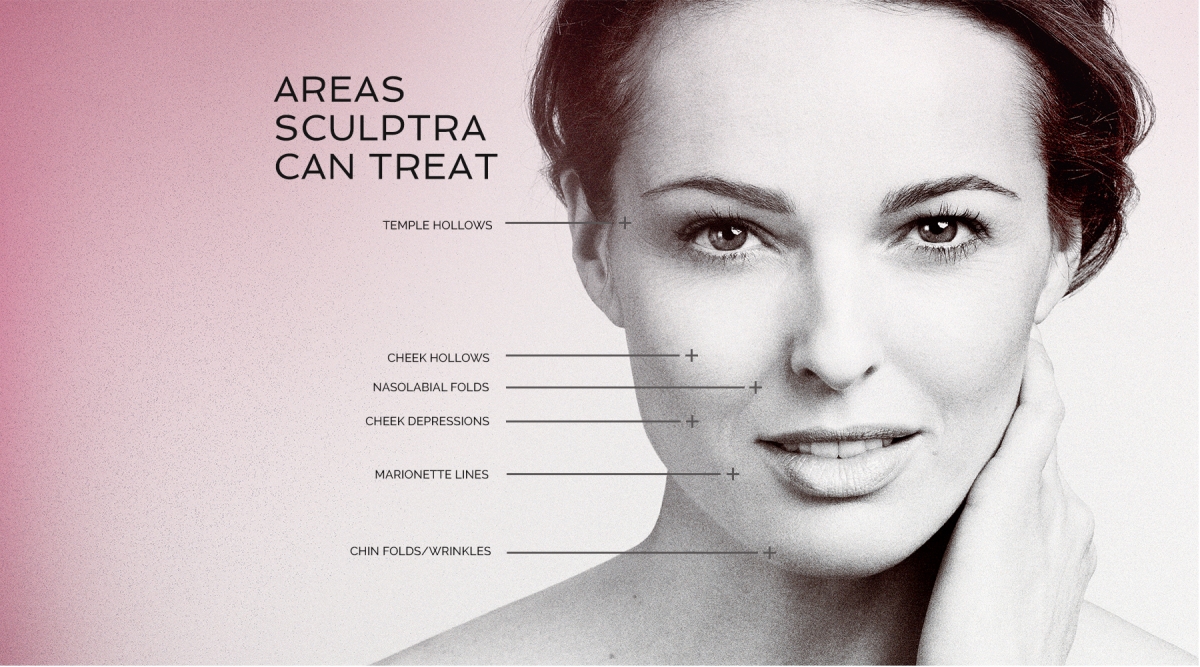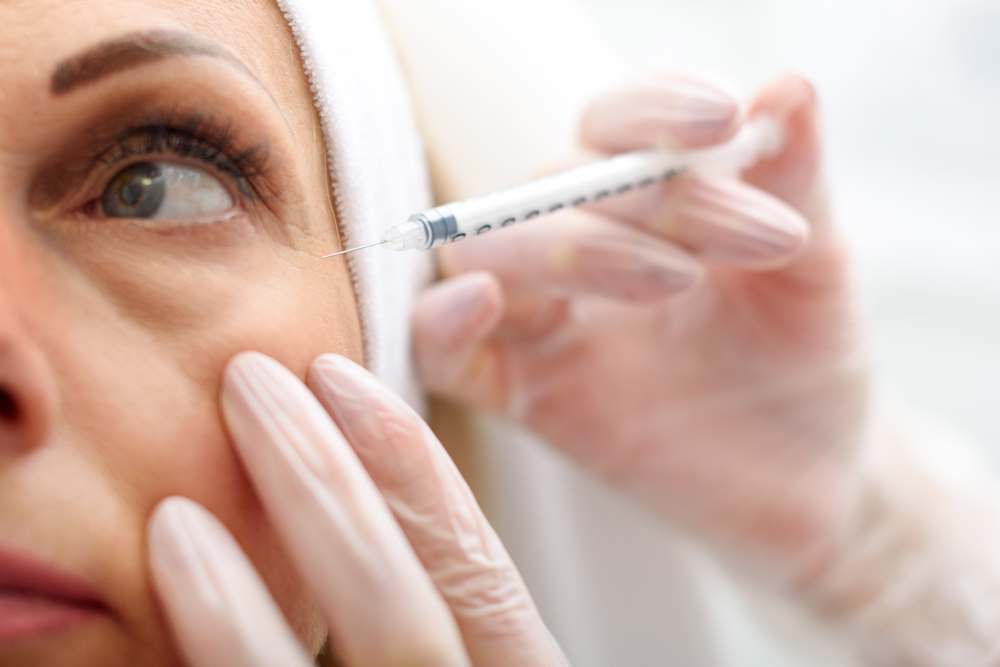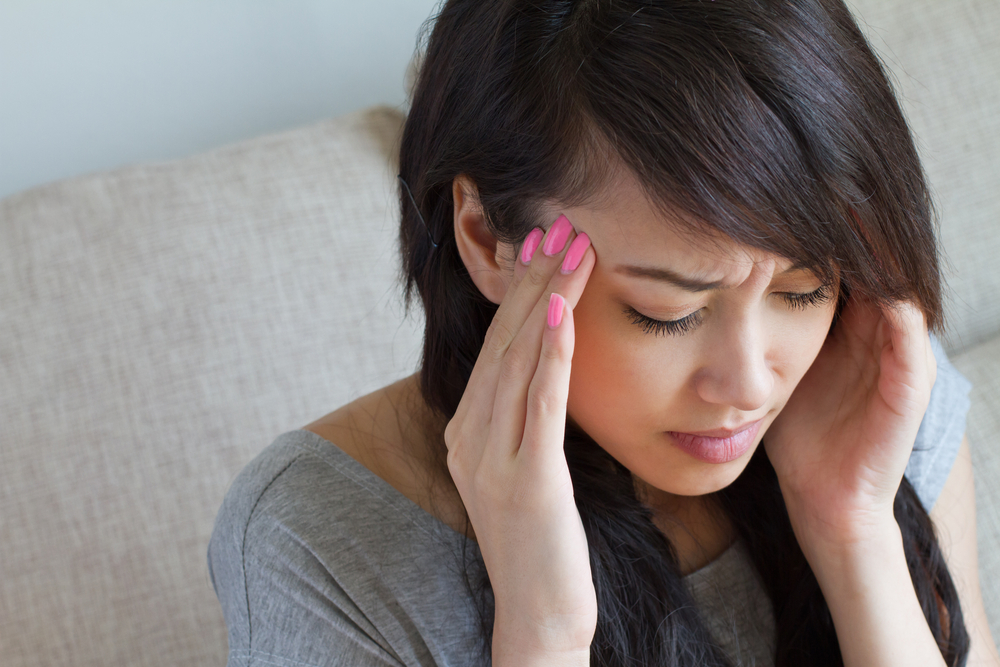Sculptra is an FDA-approved injectable that helps gradually replace lost collagen and correct facial wrinkles. It is also used off-label, as in my case, to fill in hollowed temples.
Like most people, I’ve accumulated the signs of aging over time as a result of gravity, sun damage (even though I’ve never been a sun worshiper), and genetics. The stress from gaining and then losing 70 pounds after I had my daughter, nearly eight years ago, has also taken its toll.
I have a small face, with a low hairline. When I was younger, it used to look heart-shaped, but as I’ve grown older, the lack of bone in the lower part of my face has been the bane of my existence, because of my sagging jawline – which is more prominent if I gain even a few extra pounds.
About a year ago, I also started to notice that the sides of my temples were becoming concave (think Skeletor and you get the picture), where they should be at least flat, or joining a softer, more rounded and “youthful” curve in the cheek area. Because of this I stopped wearing my hair up at events or during my gym workout. That quickly became really irritating.
How Sculptra Works

Searching for a non-surgical solution to my not-too-taut temples, I spoke with David Bank, MD, founder of the Center for Dermatology in Mount Kisco, NY. Ever since I co-authored a book – Beautiful Skin: Every Woman’s Guide to Looking Her Best at Any Age – with Dr. Bank, he has been my go-to guru to soften signs of aging as they appear.
Thus far, aside from fillers and Botox twice a year, a one-time Thermage treatment, and several of these incremental steps to fight aging, I’ve always resisted having any work done.
“You should try Sculptra Aesthetics,” said Dr. Bank. “It doesn’t have the immediate results of filler, and you need to be comfortable doing from two to five or six treatments over a period of time, but it stimulates your body to produce collagen so that over several months you can gradually add volume to and resculpt the areas that need lift. It also looks natural and can last as long as two years.”
I still wasn’t quite ready to jump in, so I did some research. Manufactured by Sanofi-Aventis, Sculptra Aesthetic (injectable poly-L-lactic acid) was FDA approved in 2009 for “the correction of shallow to deep nasolabial fold contour deficiencies and other facial wrinkles, in healthy patients.”
But many doctors have also been using it off-label to restore depleted volume to the mid cheeks, jowls, throughout the lower face, and, as in my case, the temples. I asked Dr. Bank about this.
“Sculptra aesthetic is a collagen stimulator that comes in a powder, and is mixed with sterile water by the physician,” he explained. “When it is injected under the skin, the water gets reabsorbed and the particles composed of poly-L-lactic acid directly stimulate collagen production.”
Soon after, I decided to go for it and received my first injections on both sides of my temples. I didn’t find it painful at all – although at first there is a great deal of pressure at the injection site as the product and water disperses. There was also a very temporary side effect (which Dr. Bank warned me about) that made me feel like I had lockjaw. In fact, I couldn’t fully open my mouth for one day afterward. For some reason, this side effect was strongest after the first injection – I felt it occur less and less with each subsequent one.
The minute after the injections, my temples immediately looked fuller because of the water under the skin. But that effect waned after a few days, as the water got reabsorbed and my skin got to the real work of building collagen.
>>To learn more about Sculptra, read our all-inclusive guide
Six Injections Later: Goodbye, Hollowed Temples
Since then I’ve had five additional treatments over the past several months, with at least a month in between injections. After each treatment, to smooth out any lumps and get the collagen building procedure started, I had to massage my temples for five minutes, five times a day for five days, as indicated by the product labeling.
Although I had to have six injections to get the effect I wanted, according to Dr. Bank, the number of injections necessary per patient will vary. “It depends on how much volume you have lost, and each individual is different in terms of how their skin responds,” he explains.

Dr. Bank stresses the importance of addressing the signs of aging in the temple area, something he feels too many cosmetic dermatologists are unaware of.
“Volume loss doesn’t stop at the mid-cheeks – it goes up to the temple region,” he says. “So just as filling up the mid-cheek lifts and can soften nasolabial folds, the same effect happens when you fill the temple area. In fact, filling that area exerts a more vertical pull on the rest of the face, giving optimum lift towards the back of the jawline, which makes it ideal for patients with your face structure.”
In cases like mine, the goal is to replace lost volume in the temples and restore that smooth, unbroken line from temple to cheek. Many women say they don’t care about the temples, but according to Dr. Bank, they are missing an opportunity to maximize the amount of lift they are getting in the lower face.
Dr. Bank offers these words of caution to physicians using Sculptra Aesthetic: “You want to be careful about placing it in the super-thin skin right under the eye because there is too much movement there, and the results might be unpredictable,” he says. “And you don’t want to put it in the lips, either.”
With Sculptra Aesthetic treatments stimulating my skin to make more collagen, my temples have blossomed over the past nine months from concave to convex. I feel and look prettier and more lifted, and best of all, I can wear a ponytail to the gym, or an updo to events without feeling like I’m showing my age.









